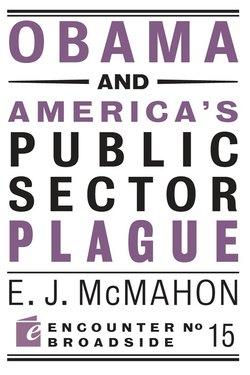Читать книгу Obama and America's Public Sector Plague - Edmund J. McMahon - Страница 4
ОглавлениеTHE GREAT RECESSION has been the deepest and most prolonged economic downturn ever experienced by most Americans. From the end of 2007 through 2009, more than 8 million jobs were lost. The national unemployment rate rose to more than 10 percent for the first time in nearly 30 years. Personal incomes and industrial output plunged. For many of those who managed to remain employed, wages stagnated or even declined as bonuses shriveled along with sales and profits.
Yet government employees - at the federal, state, and local levels - were largely spared the worst effects of the recession. On average, they continued receiving pay increases, even while average private sector wages dropped. When conditions were bleakest, hiring trends in America’s private and public sectors were sharply divergent. At the end of 2009, state and local government employment was still nearly 2 percent higher than it had been at the recession’s start in 2007, while private sector employment had dropped more than 7 percent.
In his January 2009 inaugural address, President Barack Obama praised “the selflessness of workers who would rather cut their hours than see a friend lose their job” as an example of what “sees us through our darkest hours.” Obama, however, didn’t expect or ask unionized government workers to imitate their private sector counterparts. Instead, he fought for an economic “stimulus” bill that included $145 billion in state and local aid to forestall austerity measures in the public sector. In the name of promoting economic recovery, the president has been doing his best to subsidize an already wide gap in employee compensation between public and private workers.
As of March 2010, the average hourly wage in the state and local government sector was $26.25, compared with $19.58 in the private sector. Employee benefits - including health insurance, time off, and retirement - were worth an average of $13.56 per hour for state and local government employees, versus $8.15 for private employees. Combined average compensation came to $39.81 per hour for state and local government employees, versus $27.73 for private employees.
To sum it up, state and local employees enjoy a 44 percent hourly pay premium over the people they work for, according to the official data. The actual compensation gap is undoubtedly larger, because public accounting standards understate the value of retirement benefits promised to current public employees, as we’ll see.
State and local employees enjoy a 44 percent hourly pay premium over the people they work for.
The federal government’s roughly 3 million civilian workers had an even larger pay edge. As of 2008, the average federal employee’s compensation package was worth $119,982 a year, double the estimated $59,909 compensation of private workers, according to a study by Chris Edwards of the Cato Institute. Even if the comparison is narrowed to workers with the same education and experience, the federal wage premium alone is still 24 percent, “meaning private employees must work 13½ months to earn what comparable federal workers make in 12,” as researchers Andrew Biggs of the American Enterprise Institute and Jason Richwine of The Heritage Foundation have pointed out.
Like most of their state and local counterparts, federal employees also continued to receive pay raises during the recession. We will focus here mainly on state and local government employees, who are closest to the people who pay their salaries.
Like most of their state and local counterparts, federal employees also continued to receive pay raises during the recession.
State and local government workers have for years enjoyed far more extensive and costly benefit packages than private workers. Eighty-seven percent have health insurance benefits, compared with 71 percent of private employees. Ninety percent of all state and local workers have access to an employer-sponsored retirement plan, compared with just 66 percent of private sector employees. Eighty-four percent of state and local employees have taxpayer-guaranteed pensions, while the vast majority of private workers must rely on their own retirement savings accounts. The un - funded long-term cost of generous public employee benefits - especially pensions - is a mushrooming fiscal threat across the country, as we’ll also see.
To be sure, the public-private pay differential isn’t uniform. It varies by occupation and by region. Across the country, though, government employees generally share an added advantage that money can’t buy: much stronger job security. And the federal stimulus package was expressly designed to reinforce that security.
